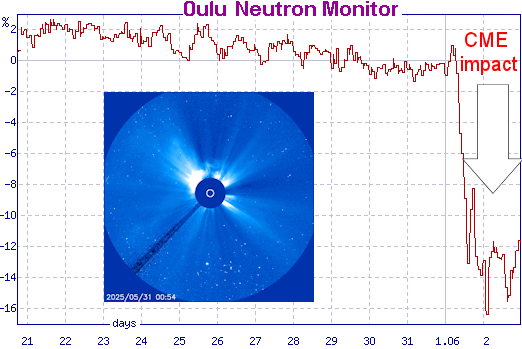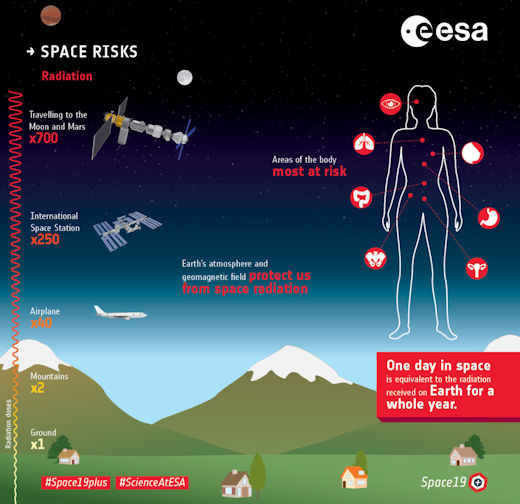June 4, 2025 (Spaceweather.com) — Solar storms are supposed to make radiation go up, right? A severe solar storm on June 1st did just the opposite. The Oulu Cosmic Ray Station in Finland registered the biggest drop in cosmic radiation in more than 20 years:

This is called a “Forbush Decrease,” named after American physicist Scott Forbush who studied cosmic rays in the early 20th century. It happens when a coronal mass ejection (CME) sweeps past Earth and pushes galactic cosmic rays away from our planet.
On June 1, 2025, a fast-moving CME crossed Earth’s orbit and thinned our planet’s radiation environment. Cosmic ray fluxes dropped as much as 25%. To find another Forbush Decrease this deep, you have to go all the way back to October 30, 2003, when CMEs related to the famous Halloween Storms were pummeling Earth.
Galactic cosmic rays are an astronaut’s worst enemy. The European Space Agency has called them “the radiation showstopper for Mars exploration,” noting that “one day in space is equivalent to the radiation received on Earth for a whole year.”

The most vulnerable parts of the human body are those with rapidly dividing cells, including bone marrow, reproductive organs, gastrointestinal tract, and skin. Forbush Decreases can provide temporary relief; the problem is, there are not enough Forbush Decreases to make a Mars journey completely safe.
The current Forbush Decrease will subside in a week or two–just enough time for a quick trip to the Moon, albeit not beyond.